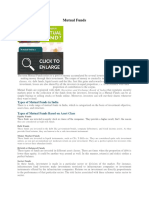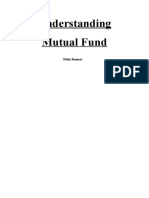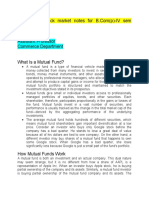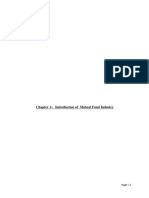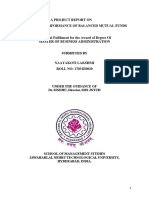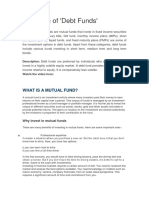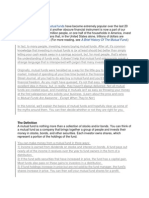0% found this document useful (0 votes)
73 views9 pagesMutual Funds: Benefits and Types
A mutual fund is a company that pools money from many investors and invests it in stocks, bonds, and other securities. Investors purchase shares in the mutual fund, with each share representing part ownership in the fund and its income. Key benefits of mutual funds include professional portfolio management, dividend reinvestment for growth, risk reduction through diversification, and convenience. However, disadvantages can include high fees, potential for management abuses, tax inefficiency, and poor trade execution for short-term investors. There are various types of mutual funds that invest in different asset classes like equity, debt, and hybrid funds for differing risk appetites.
Uploaded by
Tanvi KansaraCopyright
© © All Rights Reserved
We take content rights seriously. If you suspect this is your content, claim it here.
Available Formats
Download as DOCX, PDF, TXT or read online on Scribd
0% found this document useful (0 votes)
73 views9 pagesMutual Funds: Benefits and Types
A mutual fund is a company that pools money from many investors and invests it in stocks, bonds, and other securities. Investors purchase shares in the mutual fund, with each share representing part ownership in the fund and its income. Key benefits of mutual funds include professional portfolio management, dividend reinvestment for growth, risk reduction through diversification, and convenience. However, disadvantages can include high fees, potential for management abuses, tax inefficiency, and poor trade execution for short-term investors. There are various types of mutual funds that invest in different asset classes like equity, debt, and hybrid funds for differing risk appetites.
Uploaded by
Tanvi KansaraCopyright
© © All Rights Reserved
We take content rights seriously. If you suspect this is your content, claim it here.
Available Formats
Download as DOCX, PDF, TXT or read online on Scribd
/ 9







